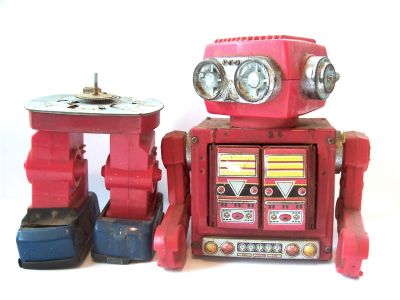Google unveils 'a helper robot that understands human language and acts according to the situation'

The world is full of various robots, such as household cleaning robots and industrial robots in industrial facilities. However, most of these robots can only perform fixed actions. Google has newly revealed that it is developing an AI that can learn human communication methods and naturally perform the actions that humans want, and has released a robot under development equipped with that AI.
PaLM-SayCan
Google gives its helper robots language skills to understand humans better
https://www.siliconrepublic.com/machines/google-robots-alphabet-large-language-models
For helper robots, the smallest things can be the hardest to grasp-YouTube
Many robots can obey simple commands such as 'grab an object' or 'collect trash', but they can do things on their own such as 'clean and tidy up your room' or 'bring me something to drink'. Complex tasks that require you to choose between actions are difficult. Google's newly developed robot ' PaLM-SayCan ' is capable of understanding the context of human language, grasping the robot's own abilities and the surrounding environment, and taking the most appropriate action.
For example, suppose a human spills a drink and asks PaLM-SayCan, 'I spilled my drink, can you bring me something to wipe up?'

Then, PaLM-SayCan received a vague instruction of ``something to wipe with'' and considered ``what is appropriate for wiping the drink'', and after deciding that ``the best thing is a sponge'', It seems that it will perform a series of actions such as ``pick up the sponge'', ``bring the sponge to the human'', and ``place the sponge''.

Also, when I changed the instructions a little and asked, 'I spilled my drink, can you bring me a replacement drink?'
Google has developed a language model ' Pathways Language Model (PaLM) ' that understands human language with 540 billion parameters and realizes complex tasks, and what humans want to say and how to return We are working to enable AI to make decisions and conduct natural interactions. This initiative started with 'What will happen if this is incorporated into a robot?' It seems that PaLM is being developed as PaLM-SayCan by combining PaLM with the robot 'SayCan' of the robot company Everyday Robots that Google is cooperating with. When actually operating in Google's office and requesting 101 different tasks so far, it made an appropriate decision with a probability of 84% and successfully executed the task with a probability of 74%.
Google researcher Karol Hausman said, 'It's far from being a household staple, and it's a long way from allowing us to communicate more naturally with robots. We are excited about this possibility as we explore new approaches.”
Related Posts:







